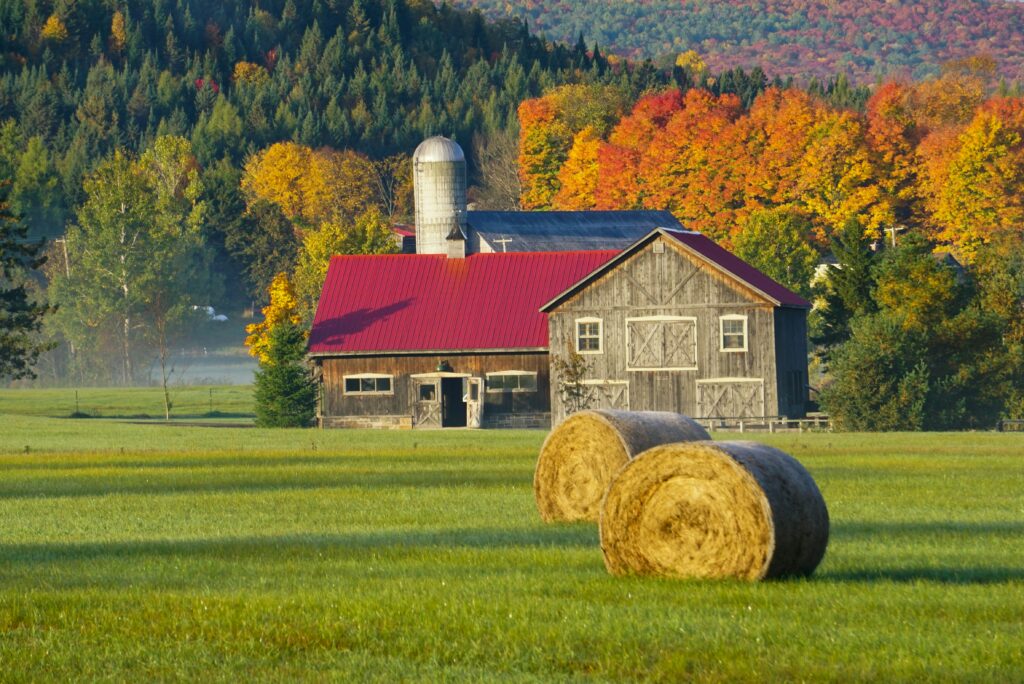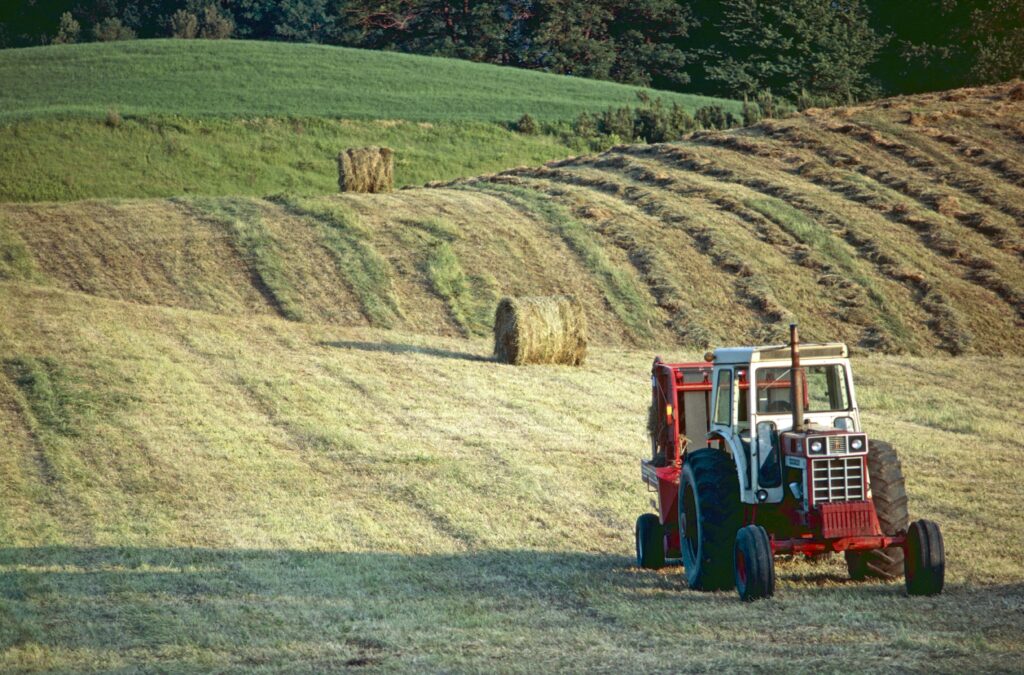July 24, 2024
Cultivating climate-related opportunities at small farm corporations in Canada
For generations Canadian farmers have been stewards of the land, preserving their farms for the next generation. In addition to negotiating the risks detailed above, there will be opportunities. Farmers have adopted sustainable practices and technologies that have adapted to the variable Canadian climate and reduce emissions through better and more efficient practices. Canada’s agricultural Beneficial Management Practices (BMPs) have encouraged environmental practices historically have, but are only adopted if beneficial to a farm’s bottom line. Evolving climate-related risks are changing the metrics of these calculations and lengthening the planning horizon.
Improvements are being made in identifying the correct beneficial management practice for the correct farm or business. Calibrating the practice to climate resiliency and environmental sustainability at the farm level is being advanced. Relevant, applicable and endorsable BMPs and increased communication building processes between the policymakers and the corporate farm community is progressing.
Of all economic sectors, agriculture is recognized as having the greatest near-term mitigation potential mostly by soil organic carbon sequestration. Three major avenues advance this:
- Land-use change: reducing farmland area, increasing agricultural yields, and restoring natural habitats (reclaiming wetlands, woodlands, planting windbreaks);
- Land-management change: less summer fallow and increased adoption of no-till and/or minimum-till; and
- Crop mix and yield changes: shifting to crops with greater root depth or perennial crops increases the soil’s capacity to sequester organic carbon.
Many other opportunities to address climate risks exist for agricultural corporations.

Farmers for Climate Solutions published a roadmap for reducing emissions in the next Agricultural Policy Framework in 2022 listing 19 Beneficial Management Practices with potential to reduce GHG emissions. BMPs included avoided conversion of shelterbelts, wetland restoration, planting riparian trees, silvopasture, alley cropping, avoided conversion of wetlands, soil management (through cover cropping and intercropping), livestock management (increasing legumes in pasture, rotational grazing, extended grazing period), manure storage and handling (synthetic impermeable floating covers, acidification of liquid manure), and nitrogen management (4R, improved crediting of organic sources, elimination of fall nitrogen application, enhanced efficiency nitrogen fertilizer, precision nitrogen management, and quantitative determination of right rate).
Regenerative farming is being used by some agricultural producers to increase the farm’s resilience to extreme weather events and sequester carbon in soil through unconventional means. Cover crops and rotational grazing of livestock to encourage plant regrowth are some of the practices. Cargill, Walmart, and General Mills have all started to promote the adoption of regenerative practices.
Product certification and differentiation
Over the last two decades, certifications for agricultural products have emerged as a voluntary measure. Generally, certification involves third-party accreditation that a certain product or process conforms to standards, of sustainability or GHG intensity set by a body such as the International Organization for Standardization, although there are many initiatives with many non-governmental and non-profit bodies involved. Some stress differing metrics. For instance, due to concerns for trade-related land-use change tracing ‘imported deforestation’ is of importance in Europe and policies and certifications have been developed in countries such as France.
Measuring agricultural GHGs has evolved. Researchers measure soil organic carbon change and GHG fluxes from agricultural soils while comparing land uses and arrangements. Similarly, measurement systems and both empirical and process models have been developed in relation to livestock production. These measurements can be combined with regional-level modeling to estimate emissions and then scaled up into local, regional and national assessments.
International standards and certification schemes that focus on land and climate are developing. Many are specific to particular crops to root out and end unsustainable agricultural products by tracing supply chain impacts from producer to consumer. For instance, the Rainforest Alliance has developed Sustainable Agriculture Standard Farm Requirements that require a sustainable agriculture standard to be followed on the farm and within the supply chain of the farm product. There is a certification and auditing system established through information technology support tools. Key measures target soil fertility, water resources, and ecosystem services, and emphasis is on crop productivity, input use efficiency, and profitability. Social indicators, including the respect of farmers’ human rights, as well as the protection of forests and natural ecosystems, are inherently oriented towards climate-smart agriculture focusing on adaptation and resilience.
New products and programs
Part of Canada’s 2030 Emissions Reduction Plan includes supporting farmers. The plan includes $470 million in investment in Agricultural Climate Solutions: On-Farm Climate Action Fund to encourage the sustainable practices of cover crops, rotational grazing and fertilizer management. There is also $330 million earmarked for the Agricultural Clean Technology Program to support energy-efficient equipment. This program is aimed at technologies that reduce emissions and enhance competitiveness. Energy efficiency, precision agriculture and bioeconomic technologies are priorities. $100 million is allocated to transformative science for a sustainable sector in climate change research, knowledge transfer and developing metrics.
The widespread adoption of beneficial management practices in the Canadian prairies, such as reduced tillage, decreased summer fallow, more cover crops, and increased in perennial instead of annual cropping systems, reduced emissions between 1981 and 2011.

Inter-generational farming
Although climate change impacts are being experienced today, the risks of future climate change impacts are greater for future generations. An integral characteristic of a family farm is the intergenerational transfer to ensure it is passed down from one generation of a family to the next. Several drivers are impacting the inter-generational transfer of Canadian farms. First, the number of farms in Canada and the farm population in Canada is declining. In 1971, one in 14 Canadians was a member of the farm population, but by 2021 this decreased to one in 61. Between 1966 and 2016 there was a 43% reduction in farmers.
Second, Canadian farms on average are getting larger. In the Prairie provinces, in 1986, 10,000 acres and larger farms represented 5% of total farms, and in 2016, this number rose by 19%. Conversely, farms 1 to 999 acres in 1986 represented 32% of total farms but by 2016, this figure dropped by 13%. Lastly, it is widely believed that fewer farmers wish to enter farming and fewer farms have a child successor.
As Qualam et al. conclude, “Farmland concentration makes it much harder for young and new farmers to enter agriculture.” While these dynamics reduce the number of inter-generational farm transfers, long enduring barriers to inter-generational transfer have existed in Canada, the United States, and globally. These barriers include a failure of farmers to plan for a transfer because of the ‘soft issues’ often not discussed that embody the emotional and social dimensions. Many farmers don’t plan for retirement and/or fail to plan for an inter-generational transfer because of the loss of identity, the feeling that will ensue in such a transfer, and the loss of status and power. Younger successors also become frustrated because of a lack of delegation as older retiring agricultural producers seek to maintain their knowledge and power preventing full sharing and dissemination of knowledge. These dynamics create the risk of a knowledge gap that could inhibit the operations and sustainability of a family farm.
Research shows that succession planning for farms does increase the chances of an intergenerational farm transfer. A private sale or a lease to a tenant farmer are also options. Recommendations to address issues preventing such planning and transfer include being sensitive to the soft emotion issues that act as a barrier so that a transfer can occur and the retiring farmer can be involved in a plan that preserves as much as possible their social identity as a farmer and connections to other farmers and their corporate farm and agribusiness. This can also ensure the retiring farmer shares knowledge and provides the greatest chance of success for the incoming successor to succeed. Soliciting the services of a farm successorship facilitator, or creating a voluntary organization of retired farmers can provide assistance and reduce any risk involved in the transition. Tax changes are also facilitating intergenerational transfers and even allowing a transfer to a child through a staged process of three or possibly five to ten years, without the successor child farmer having to set foot on the farm.

Agriculture climate action on the ground
Many Canadian farms are leading in proactively taking action in relation to climate change. For example, Farmers for Climate Solutions is a farmer and rancher-led coalition that identifies and advances pragmatic solutions to address climate change, transition to low emissions and build high resilience approaches to agriculture. Farmers for Climate Solutions has also created a farmer-to-farmer learning hub for reducing input costs, boosting productivity and improving soil health titled FaRM Resilience Mentorship accessible on their website.
Nature Canada provides a toolkit on nature-based climate solutions for agriculture with information on replanting and restoring abandoned crop fields, rotational grazing, tree/shrub/native vegetation buffer areas, restoring wetlands, and converting developed ranching fields to native grasses and vegetation. The Climate Atlas also provides information on past and future changes in precipitation and hot days while the Canadian Drought Monitor provides real-time information on drought conditions across much of Canada.





